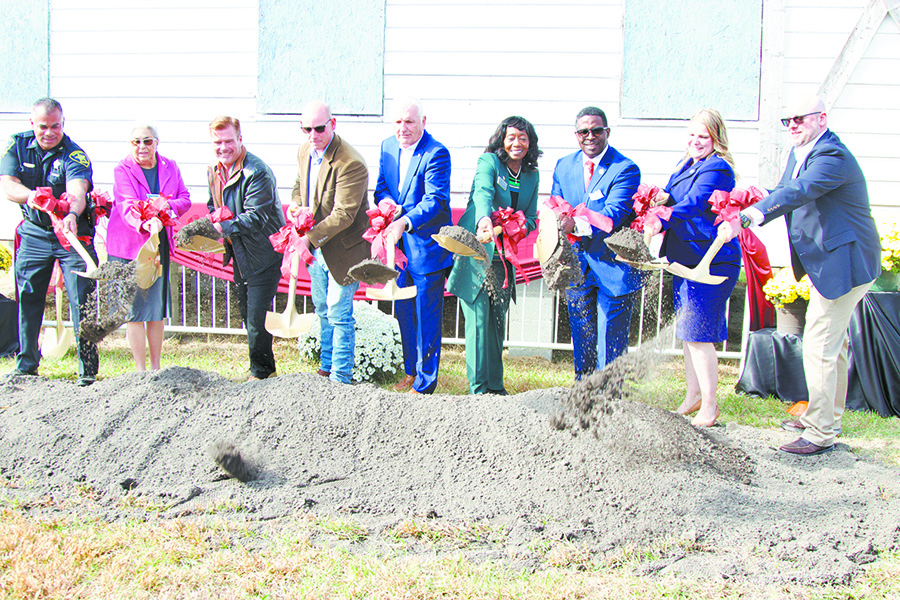Civil
Cornland School and Dismal Swamp Legacies Unfolding In Chesapeake
Chesapeake initiates the restoration of the historic Cornland School in the Dismal Swamp region, marking the beginning of the development of The Historical Village of the Dismal Swamp. The project aims to showcase Chesapeake’s cultural history, including the experiences of Indigenous groups, Underground Railroad escapes, Maroon communities, and the Swamp’s significance in trade, commerce, and agriculture.

By New Journal & Guide Staff
CHESAPEAKE
A groundbreaking ceremony in the city’s Dismal Swamp region was held on November 9 highlighting the rehabilitation of the historic Cornland School, an early 1900s school for Black children. The event also kicked off the first phase of the city’s new tourist attraction, The Historical Village of the Dismal Swamp.
The new Historical Village is expected to become a major visitors and tourist site with exhibits showcasing Chesapeake’s cultural history and its connection to the Great Dismal Swamp. According to the Chesapeake Historical Preservation Commission, “when finished, the Village will represent how generations of our region’s residents lived, learned, worked, farmed, and played.”
In addition to the Cornland School Museum on the site, other exhibits will highlight the Indigenous groups who first inhabited the Swamp, experiences of Blacks escaping slavery on the Underground Railroad, the Maroon communities who lived in the Swamp, and the importance of the Dismal Swamp as a significant crossroad for trade, commerce and agriculture.
 The developing Village is located on a 12-acre site on Glencoe Street (off Route 17), and once completed it will be the first African-American Historical District in Chesapeake and the Hampton Roads Region.
The developing Village is located on a 12-acre site on Glencoe Street (off Route 17), and once completed it will be the first African-American Historical District in Chesapeake and the Hampton Roads Region.
The Cornland School Museum which will be the first exhibit to inhabit the Village is projected to be completed in the spring of 2024. It was first presented to the city and championed by Councilwoman Dr. Ella Ward, Cornland School Foundation Board Chair, after the foundation’s founding in 2011.
In 2020, Chesapeake City Council awarded $400,000 to the Cornland Project to support the relocation of the dilapidated school from the private property of Mr. and Mrs. Randolph and Wanza Snead at 2315 Benefit Road to the Glencoe Street site.
On March 24, 2022, the late 4th District Congressman A. Donald McEachin presented a $3,000,000 check to the City of Chesapeake for the restoration of the Cornland School Museum and the completion of the Chesapeake Historical Village at the Great Dismal Swamp. The Cornland School Project has also received funds from the Crestwood Alumni Association and Dominion Energy, among other supporters. The 12-member Board of Directors had raised nearly $35,000 prior to the city’s approval in order to help make repairs to the building to prevent further deterioration and to help stabilize the then 117-year old structure.
The restoration of the school as a museum will show residents , students, and visitors what it was like for African-Americans to gain an education in grades 1-7, with all seven subjects taught by one teacher in one room in Norfolk County (Chesapeake). The school served the Black community from 1902 to 1953 when it was closed and Crestwood High School was built along with Southeastern Elementary School.














